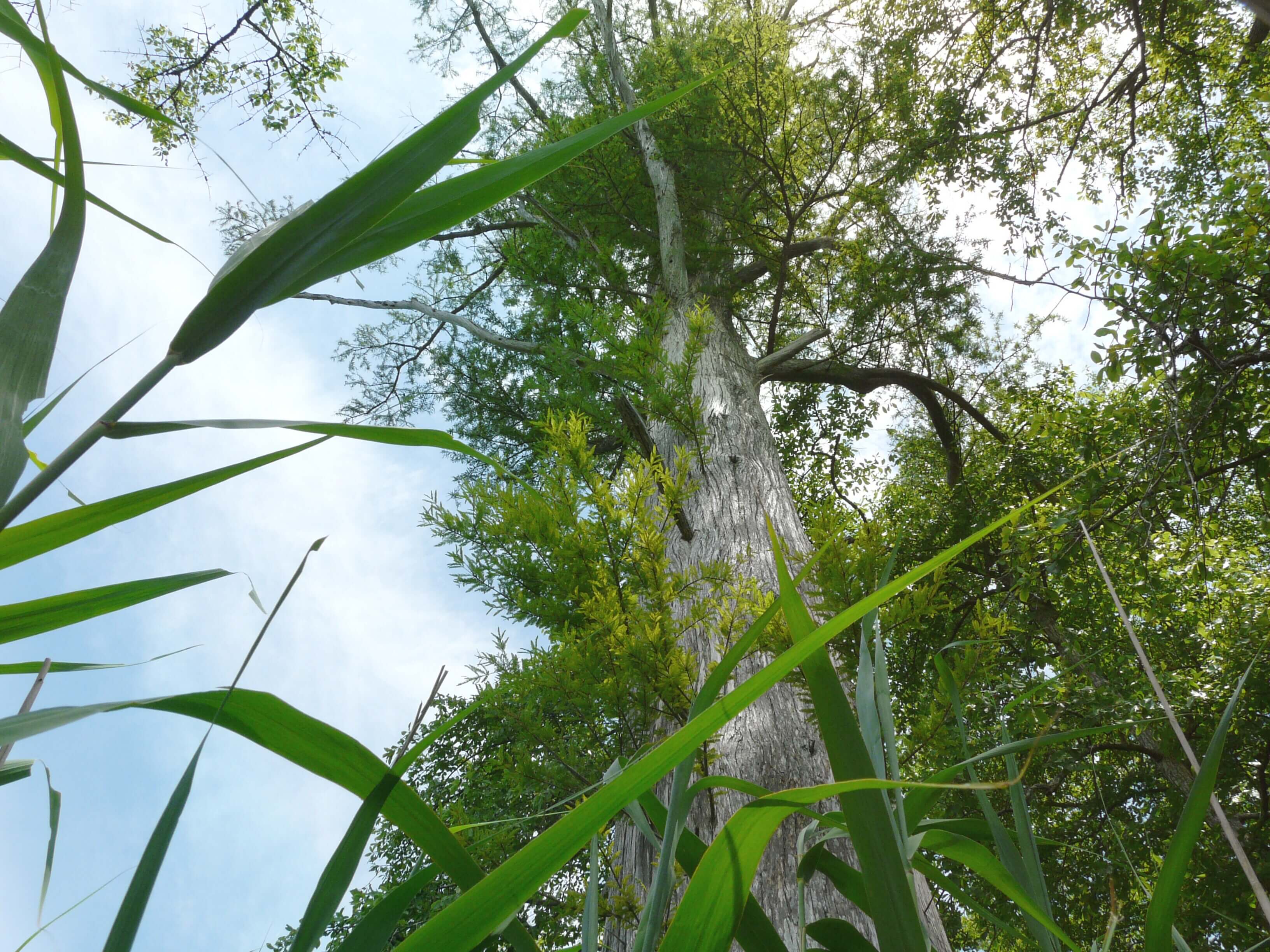With the collapse of the estimated 600-year-old Salem Oak in Salem County, a portal to the past has closed. The Salem Oak, the oldest white oak in New Jersey before it collapsed due to rot and stem failure, was here before Christopher Columbus arrived.
Now, it will go the way of Columbus: rotting into soil.
Cape May County has its fair share of old trees, yet nobody seems to know where the oldest resides. It exists out there somewhere, but might hide in a marsh or along a forgotten roadside.The Shoemaker holly tree in Upper Township is more than 300 years old. It sits at a rest stop near mile marker 23 of the Garden State Parkway near well-worn picnic benches.
This clash of ancient nature with modern convenience is symbolic of much of Cape May County’s makeup.
“Noteworthy Trees of Cape May County” is a comprehensive guide to the county’s rarest and oldest trees. The book, published in 1948, mourns the fact that thousands of acres of white cedar swamps were cut down “thoroughly, if not wisely” by the late 19th century, as the effects of the Industrial Revolution settled into all aspects of American life.
Robert Alexander, the book’s late author, noted the county’s economy relied on the export of white cedar and other wood. Shingles from these trees were exported to New York and the West Indies. “In 1857, there was not an acre of virgin growth of these trees left standing in the county,” he wrote.
Although Pineland’s Preservation Alliance reports that less than one-sixth of the cedar swamps that once existed in New Jersey still stand today, trails such as the Great Cedar Swamp trail in Ocean View show a glimpse of the natural might that once engulfed Cape May County.
Joseph Smith, Ph.D. in Environmental Science and Policy and a local ecologist with a passion for the preservation and restoration of Cape May’s natural luster, surfaced two of the “noteworthy trees” from the book. One of these, a 70-foot white poplar, was once, according to Smith, considered the oldest of its kind in the country. It stands at the end of Weeks Landing Road in Erma.
Hidden down this road is what remains of a once-bustling port. The port is now a scenic spot for perhaps a picnic, but its economic and cultural relevance have disappeared.
Smith, pointing to the large white poplars which tower over the old port, said: “These trees are noteworthy for their place in local history. They were planted at some point when this area was still a really busy port.”
“This was where fishermen would work, and oyster harvesters would come. There were docks here,” he continued.
“There was a big farmhouse here where oysters were stored in the winter. There was a lot of commerce coming out of here. This was a direct route, before we had roads, to the barrier islands. This tree is just one leftover reminder of all that was going on back then,” he said while gazing upwards at the tree’s might.
These poplars are not native to New Jersey; they were exported from Europe and were planted here when the port thrived.
Although “Noteworthy Trees” mentions two prominent trunks on the white poplar, there are many more now. White poplars clone themselves through an intricate root system, and many of the white poplars at Weeks Landing are genetically identical to the father tree listed in “Noteworthy Trees.”
The next memorable tree rests in Middle Township’s Beaver Dam Swamp, at the end of the rugged and pothole-filled Beaverdam Road. This tree is a more than 80-foot-tall bald cypress, a tree usually associated with the swamps of the American South.
The tree overlooks Clint Mill Pond, which was dammed to generate power for the large sawmill that once stood where only bubbling marsh remains.
Many locations which are now called “scenic,” were once places of industry. Cape May County endured the tension between nature and industry for hundreds of years. What was once a swamp became a loud sawmill, and nature’s muggy waters have risen to reclaim the swamp once again.
Smith said the bald cypress is an out-of-place specimen which was perhaps planted by the owner of the sawmill over 100 years ago. Smith noted invasive reeds that surrounded the tree’s base; the presence of these reeds means that the salt-water saturation of the soil has increased.
Smith estimated the tree has only a decade or two to live. Climate change, coupled with the normal rise of seawater which coast-dwellers have dealt with for centuries, will ensure the tree’s death.
Smith carries on the work of the disbanded Cape May Geographic Society, a collection of ecologists, biologists, and other nature-interested individuals who made it their mission to preserve the intricacies of Cape May County’s delicate ecosystem. Their archived columns can be found in old issues of the Cape May Star and Wave.
Smith’s digital blog (Smithjam) is like those bulletins. He tells the stories of the wild and breathtaking swamps, trees, and creatures of both contemporary and long-gone Cape May County.
The Herald has reported on rising sea levels and threatened species, and New Jersey is known for extensive attempts at preservation and restoration of animals and land. Smith’s admonition is to preserve the natural wonder of the county, which supports much of the county’s economy.
Smith warned that neglect of the environment might have unforeseen long-term consequences. Referring to the former Weeks Landing port, Smith said any given body of water, including that unassuming marsh, was once teeming with oysters. It is now a much greater challenge to find them.
Projects like “Noteworthy Trees” were common when the Cape May Geographic Society convened. Many of these noteworthy trees stand today, now surrounded by honking horns and passersby.
The oldest tree in Cape May County may never be known; however, those who know of an exceptionally old tree, may email Collin Hall at collinahall@gmail.com, or submit a Spout Off.







